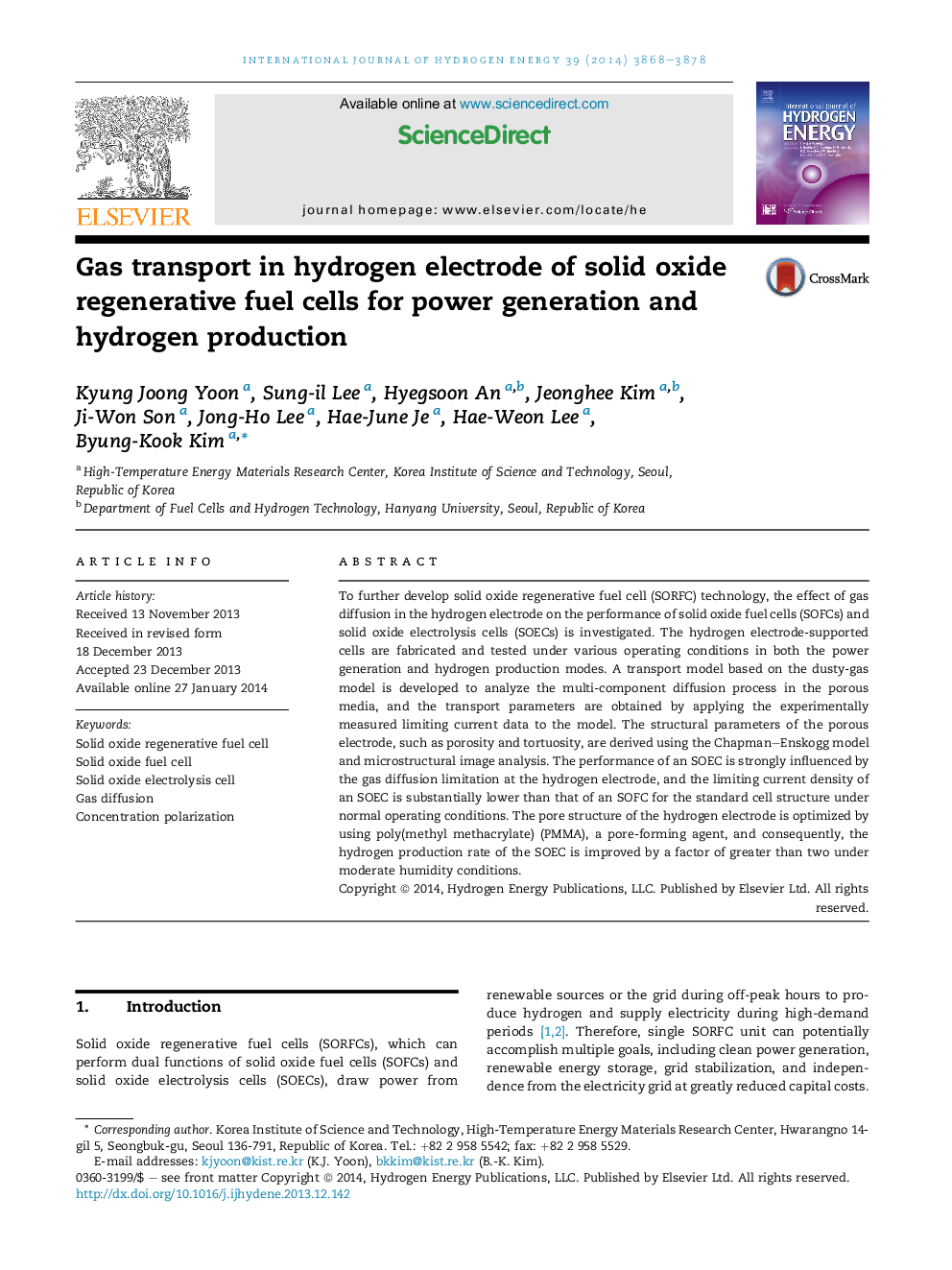| Article ID | Journal | Published Year | Pages | File Type |
|---|---|---|---|---|
| 7720163 | International Journal of Hydrogen Energy | 2014 | 11 Pages |
Abstract
To further develop solid oxide regenerative fuel cell (SORFC) technology, the effect of gas diffusion in the hydrogen electrode on the performance of solid oxide fuel cells (SOFCs) and solid oxide electrolysis cells (SOECs) is investigated. The hydrogen electrode-supported cells are fabricated and tested under various operating conditions in both the power generation and hydrogen production modes. A transport model based on the dusty-gas model is developed to analyze the multi-component diffusion process in the porous media, and the transport parameters are obtained by applying the experimentally measured limiting current data to the model. The structural parameters of the porous electrode, such as porosity and tortuosity, are derived using the Chapman-Enskogg model and microstructural image analysis. The performance of an SOEC is strongly influenced by the gas diffusion limitation at the hydrogen electrode, and the limiting current density of an SOEC is substantially lower than that of an SOFC for the standard cell structure under normal operating conditions. The pore structure of the hydrogen electrode is optimized by using poly(methyl methacrylate) (PMMA), a pore-forming agent, and consequently, the hydrogen production rate of the SOEC is improved by a factor of greater than two under moderate humidity conditions.
Related Topics
Physical Sciences and Engineering
Chemistry
Electrochemistry
Authors
Kyung Joong Yoon, Sung-il Lee, Hyegsoon An, Jeonghee Kim, Ji-Won Son, Jong-Ho Lee, Hae-June Je, Hae-Weon Lee, Byung-Kook Kim,
